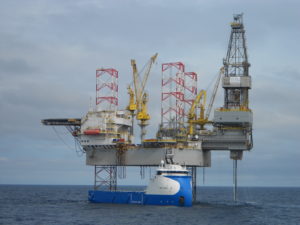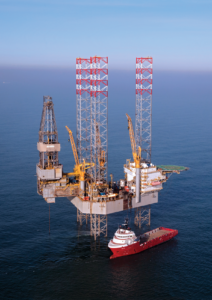Borr Drilling switches focus to rig startups amid cautiously optimistic outlook for a North Sea rebound
Tender inquiries on the rise, but drilling permit uncertainty and shorter contract lengths remain challenges and drilling contractors maintain cost discipline
By Sarah Junek, Associate Editor
In the 18 months since the end of 2017, Borr Drilling has grown from just one operating rig to an anticipated 16 working rigs by August. With an additional eight premium jackups still under construction, the company is positioning itself for the ongoing market recovery.
“We definitely see a rise in the number of tender inquiries as compared to last year, both for jackups and semisubmersibles,” said Peter de Bruijne, Director of Marketing and Contracts, North Sea region. In the North Sea, “the challenge is that quite a lot of these tenders are still related to relatively short-term work.”

Shorter contracts for one, two or three wells continue to be the norm in the North Sea, in part because operators are still cautious about overcommitting themselves and also because more and more work is coming from the smaller independent operators.
Congestion at the permitting office is one more reason for the increase in short-term contracts. “Our clients are having more difficulty getting drilling permits in time, which leads to more uncertainty on contract start dates,” said Mr de Bruijne. Not only are permits for onshore and geothermal wells increasing, but in the North Sea “we compete with offshore windmills, shipping lanes, military practice zones and environmental areas. It’s just a very, very busy sea.”
Shorter contracts potentially mean more gaps and more idle time for the rigs. However, with the current increase in tender activity, it is expected that this situation will continue to improve and that idle time periods between contracts will decrease.

Mr de Bruijne said that much of the activity in the North Sea also is being compressed into the spring and summer months. Such working patterns means it’s difficult for contractors to attain the type of continuity and efficiency possible with multiyear work programs.
After Borr concluded its acquisition of Paragon Offshore last year, the mostly premier jackup driller inherited an operating framework, including Paragon’s North Sea structure, with harsh-environment rigs. The two companies’ systems are now fully integrated, and putting rigs to work has become the core focus.
Aside from recently putting three rigs to work in Nigeria and one in Mexico, and with an additional two jackups anticipated to start in Mexico this summer, “we have also started up Ran in the East Irish Sea,” said Mr de Bruijne, “so we’re really quite busy in starting up all of these rigs worldwide.”
Ran, a KFELS Super A jackup capable of operating in up to 400 ft of water, is contracted to drill for Spirit Energy in the UK North Sea until Q1 2020.

Borr has been particularly active in high-pressure, high-temperature (HPHT) environments with its heavy-duty jackups.
“I would say there is significant activity going on regarding HPHT drilling,” said Mr de Bruijne, adding that tendering for 2020 projects is already ongoing. “This year, the Prospector 5 drilled a challenging HPHT well resulting in a large discovery for CNOOC.”
Located in the UK Central North Sea, the Glengorm discovery in approximately 86 m of water was an exploration well drilled to a total depth of 5,056 m. It encountered net gas and condensate pay zones with a total thickness of 37.6 m.
Prospector 5 is a 400-ft capable JU2000E rig, now contracted to drill another HPHT well for Neptune Energy in the Netherlands until at least October. The Prospector 1, a rig with similar specs to Prospector 5, has also been working in challenging HPHT environments. The rig is currently operating in the Netherlands under a multi-well contract to Tulip Oil.
One of Borr’s projects for the coming year in the North Sea is to reduce CO2 emissions from its rig fleet, which will help operators to secure their drilling permits, said Mr de Bruijne.
“Right now we’re at the phase where we’re starting to see more activity, and it becomes really important not to lose that cost focus.” – Peter De Bruijne, Borr Drilling
The quest for reduced costs and operational efficiency also continues. “Since 2014, we’ve actually been able to reduce our operating costs quite significantly,” Mr de Bruijne said. “Right now we’re at the phase where we’re starting to see more activity, and it becomes really important not to lose that cost focus.”
Compared with other downturns, activity is not increasing sharply as it did in the past. “However it is certainly moving in the right direction.” DC





